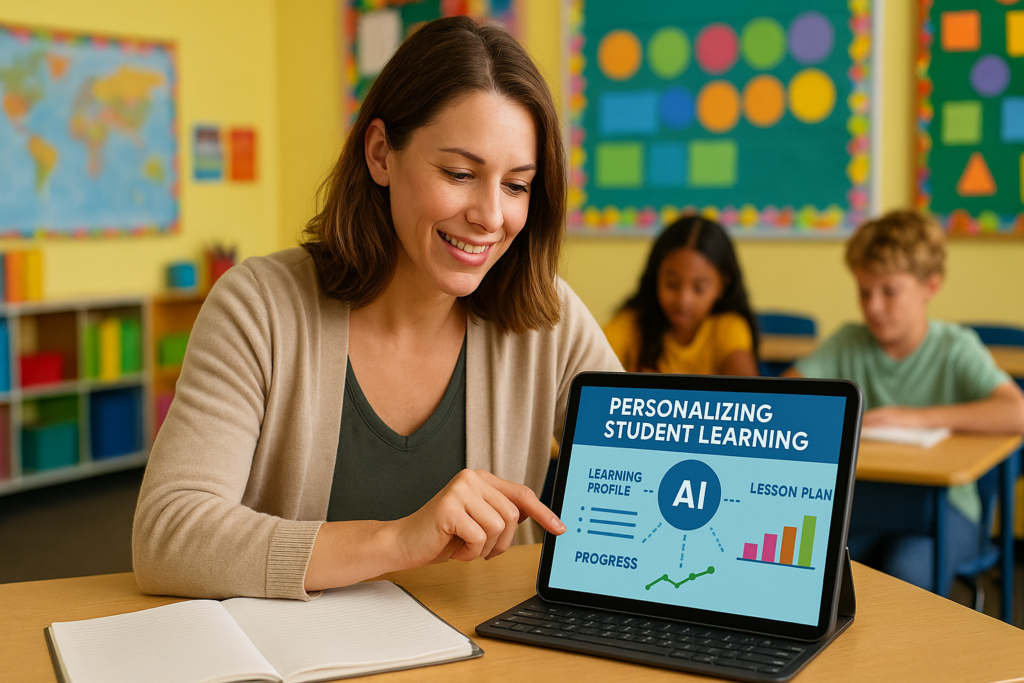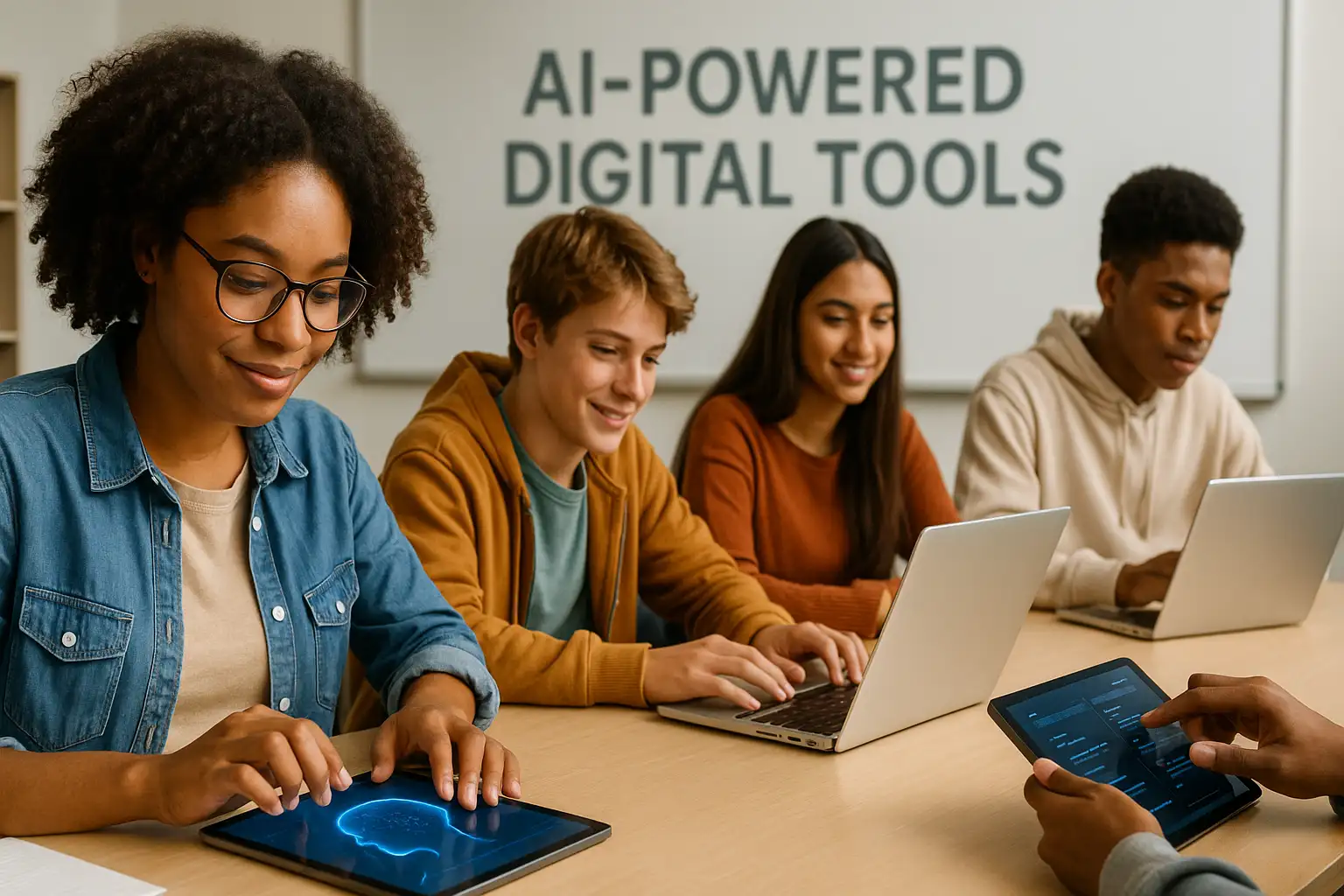Artificial Intelligence (AI) is no longer just something out of a sci-fi movie. It’s right here, in our schools, helping teachers and students every single day. And when we talk about the Future of Teaching, we’re really talking about how AI is going to change the way learning happens—forever.
How the Future of Teaching Is Being Shaped by AI
The Future of Teaching is already happening. Right now, AI tools are helping teachers correct homework faster, create personalized learning plans, and even support students who struggle the most. This change is not something far away—it’s real, and it’s growing every year.
Let’s talk about it in a way that makes sense, with simple language and real examples, so you can understand how this affects you, your school, and your students.
What Is AI and Why Does It Matter in Schools?
Imagine if your computer could learn from experience, just like you do. That’s basically what AI does. It uses tons of data and patterns to make smart suggestions or decisions. In schools, this means helping students learn better and helping teachers save time.
For example:
- An app that helps a student improve in math by adjusting questions based on their performance.
- A tool that writes personalized feedback for essays.
- A chatbot that answers students’ questions late at night when teachers are unavailable.
AI matters because it can help us focus more on what really counts: understanding our students and giving them the best chance to succeed.
Ways AI Is Changing the Classroom Today
AI is already part of many classrooms around the world. Here’s how:
1. Personalized Learning for Every Student
Every student learns differently. Some need more time, others move fast. AI tools can notice these patterns and adjust lessons to fit each child. That means no one is left behind.
Imagine a shy student who never speaks up in class but learns best through videos and games. AI can track that and offer the right materials.
2. Teachers Get More Time for What Matters
Correcting tests, making lesson plans, filling reports… teachers do so much! AI can take care of the repetitive stuff so educators can spend more time with students.
For instance:
- AI can grade multiple-choice tests instantly.
- AI can create quizzes based on yesterday’s lesson.
- AI can help with attendance and reports.
3. Supporting Special Needs Students
AI can be a great helper for students with learning difficulties. There are apps that read texts out loud, explain hard words, or turn speech into text. These tools give every student a fair chance to learn.

Concerns Teachers May Have About AI
It’s normal to have questions or even worries about AI. Will it take away teaching jobs? Will students stop thinking for themselves? What about privacy?
Let’s face these together:
- Will AI replace teachers? No. AI is here to help, not to replace. It can’t feel, connect, or understand emotions like a human can.
- Will students become lazy? Not if AI is used wisely. It should guide students, not do their work.
- What about privacy? That’s a big one. Schools must be careful and follow laws to protect students’ data. Look for tools that respect the LGPD (Brazilian data law) or GDPR (Europe).
How to Start Using AI in the Classroom
You don’t need to be a tech expert to begin. Start small.
Try tools like:
- Khan Academy (https://www.khanacademy.org): has AI features for personalized learning.
- ChatGPT (https://chat.openai.com): helps create lesson plans or give ideas for activities.
- Quillionz (https://www.quillionz.com): makes quizzes automatically from any text.
Ask other teachers what they’re using. Share experiences. Learn together.
What the Future of Teaching Might Look Like
In a few years, classrooms might look very different:
- Students learning at their own pace, with AI suggesting next steps.
- Teachers acting more as mentors than lecturers.
- More time for creativity, empathy, and emotional support.
AI could even help reduce inequality in education by giving every child access to high-quality resources.
How Teachers Can Prepare for the Future
Even if the idea of AI feels distant, now is the time to prepare.
Here’s what you can do:
- Stay curious. Learn about new tools and try them out.
- Focus on what only humans can do: empathy, creativity, listening.
- Talk to your students about AI. Make them aware of its benefits and risks.
Remember, change is not the enemy. It’s an opportunity.
Key Points About Future of Teaching
- AI is already changing classrooms in real ways.
- It helps personalize learning and save teachers time.
- Concerns like job loss and privacy are real, but manageable.
- Teachers play a key role in guiding how AI is used.
- The future is about working with AI, not being replaced by it.
- Start small with easy-to-use tools.
- Share your experience with other educators.
Conclusion
The use of AI in education is growing fast. But more than just a trend, it’s a real tool that can help teachers do what they love most—teach, inspire, and support students. It won’t replace the heart of teaching. Instead, it can free up time, open new possibilities, and bring us closer to a more fair and effective education system.
So yes, the future of teaching may look different. But with your human touch and AI’s smart support, it can be even better than we imagine.
What do you think about AI in the classroom? Leave your thoughts in the comments!

